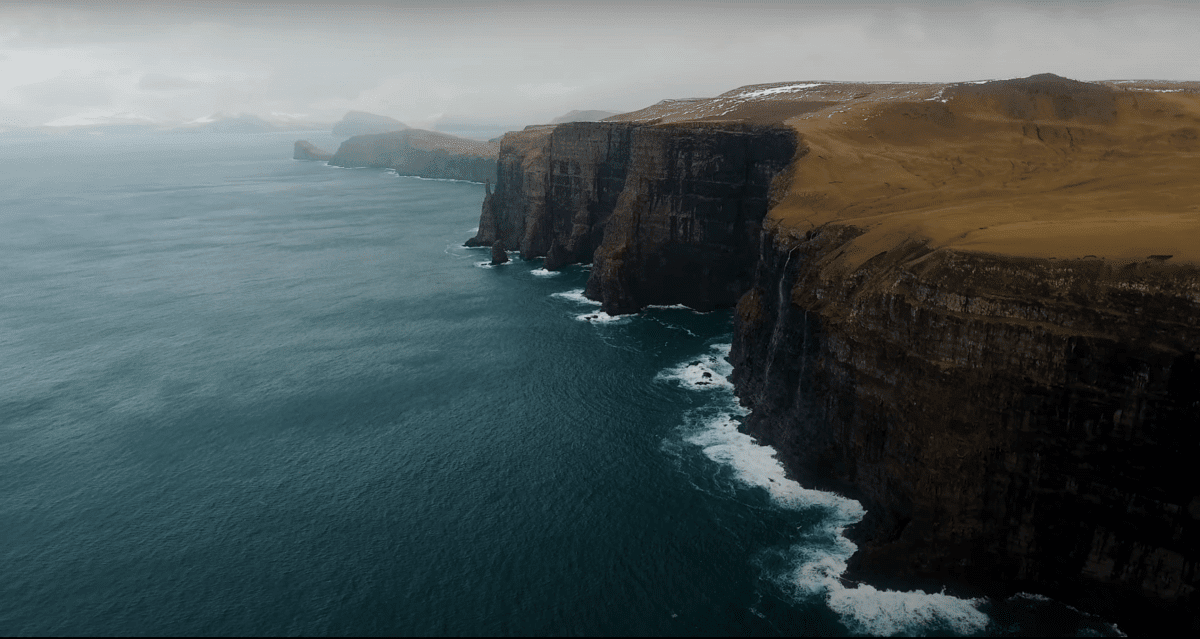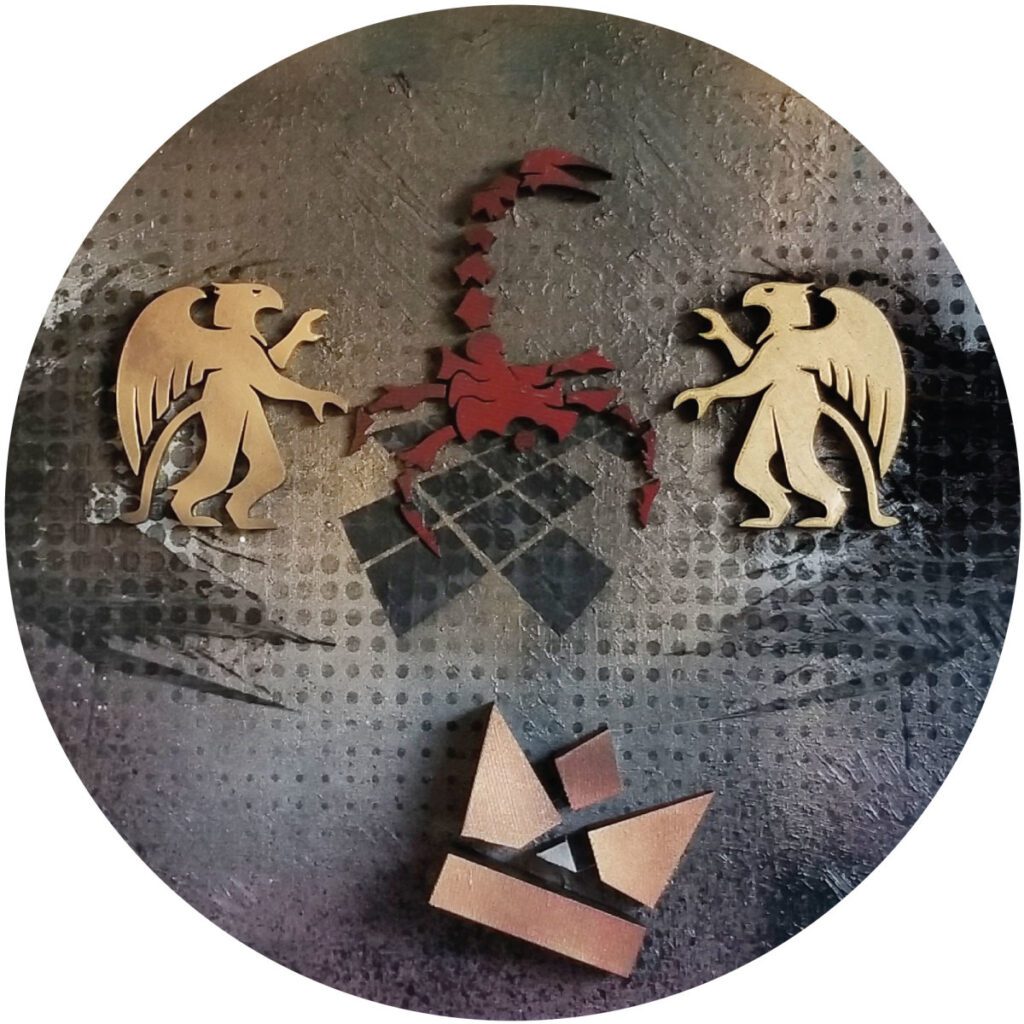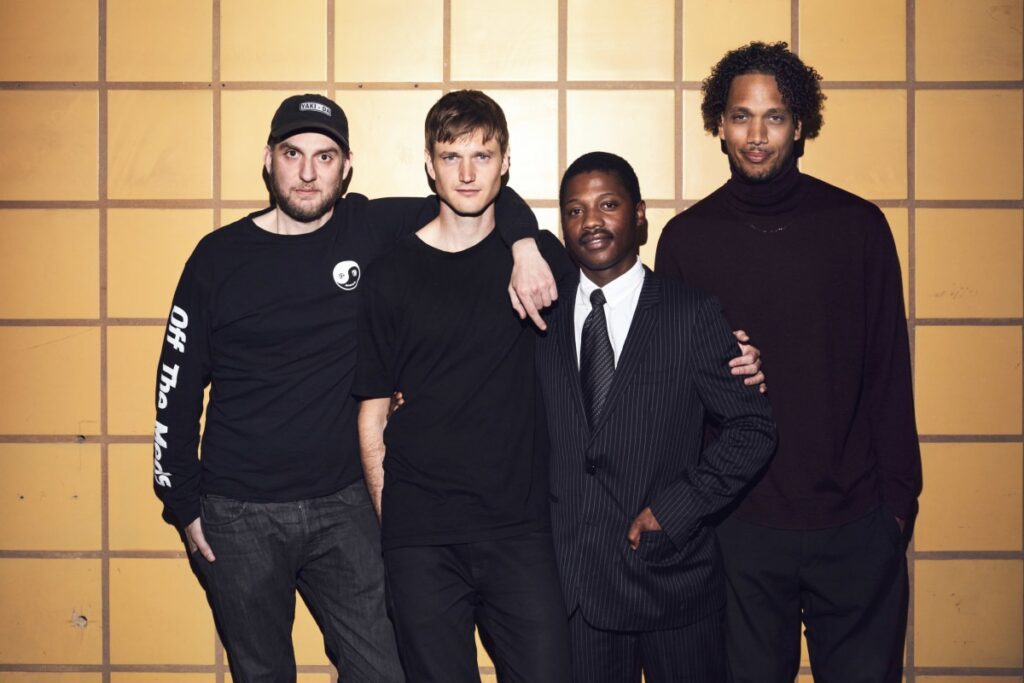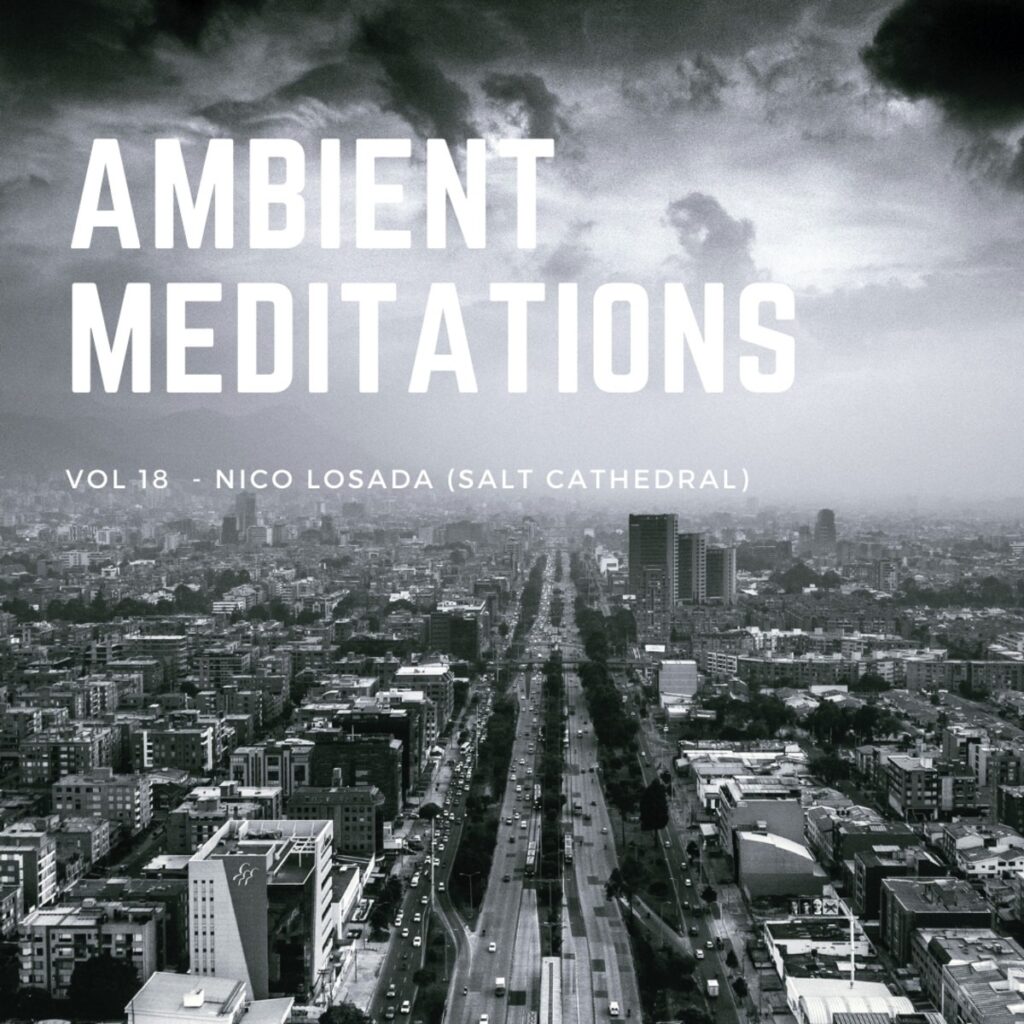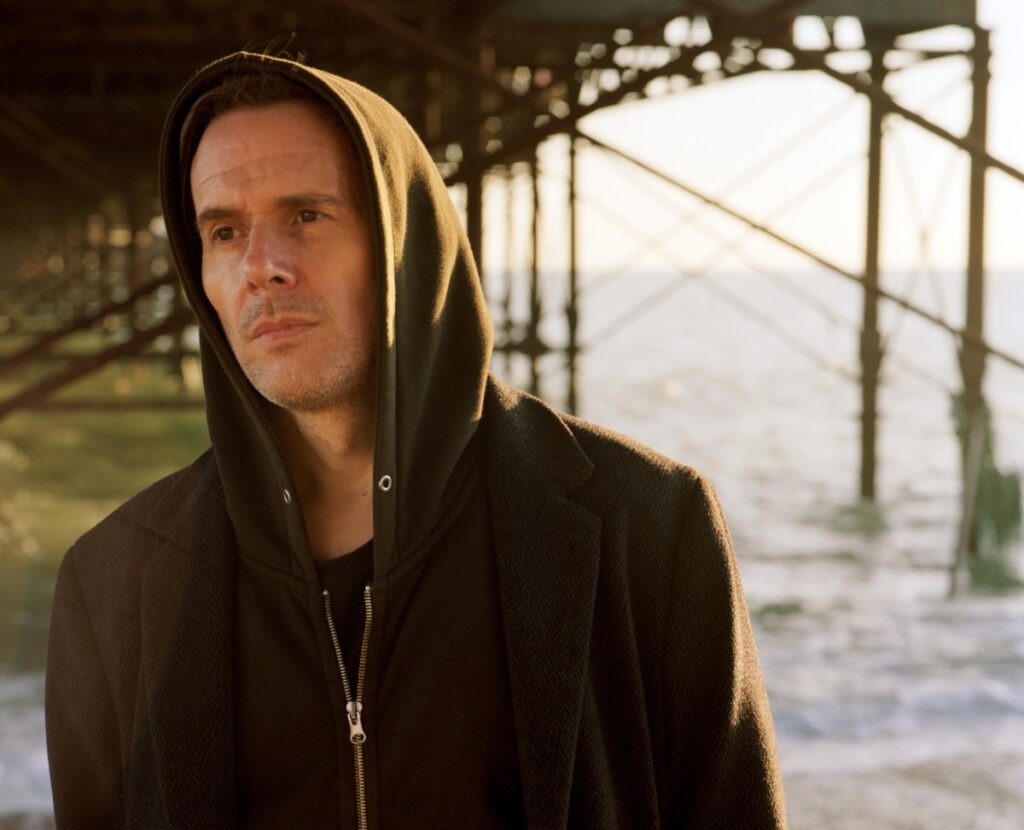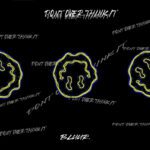This is one of the more interesting Director’s Cuts we have done in a little while. Over the past year, people in their isolation from each other have gotten more connected with nature. Sound designer, producer & multi-instrumentalist, Ted White traveled the world, gathering field recordings from several of the seven continents (he couldn’t get to Antarctica during the pandemic) and mixed them with modular sounds and local instruments into long, warping compositions nearly an hour long. The albums are immersive and enthralling, each dedicated to the individual continents. You will hear the movements of rivers, rustling of animals moving through jungles, oceans crashing on shores, bird songs from around the world and so much more.
If you are like me, often stuck in your small city apartment earning almost no money, with the desire to get out into world, this is for you. If you just want some peace in a world moving a mile a minute or need something to calm you as you go to sleep, this is sublime.
We had Ted White explain the process of making these albums for a new Director’s Cut feature. He goes through the method of recording sounds in the Amazon, going to the Australian outback, recording birds in India and traveling the world in search of getting over 100 hours worth of sounds for this project. He even went to a local zoo during lockdown to record animals from the Antarctic to mimic what it would be like there. He had to leave behind clothes to get local instruments on his travels, but in the end it was worth it.
Listen to each of the projects under their descriptions and get your copy of them here via Platoon.
“I wanted this project to be immersive and act as a form of escapism from the stresses of day-to-day life, not to mention the difficult past year that we have all endured globally. The 7 albums consist of location sounds that I have been collating from my travels over the past 7 years. Like a sound diary, so to speak. Some of the countries that I could not travel to due to COVID restrictions I have produced within my studio using creative production and recording techniques," explains White.
"My process for writing the 7 albums was to compose each album in a continuous 60-minute track and then cut these down into approximately 22-24 tracks per album. Composing this way required me to think of the whole musical journey in one Pro Tools / Logic session as opposed to having to have hundreds of smaller two to three minutes track sessions. I wanted each album to take the listener on a journey as well as have a loose narrative to follow yet still allowing enough room for the listener to interpret their own story of where the music and sounds take them.”
1. Europe Earth Sounds
For the Europe album, I wanted to portray the dense woodland sounds and beautiful birdsong that I relate to from my travels around the UK, Germany and Norway, among many other places. In regards to instrumentation, I wanted to start the album with otherworldly modular synthesized drones and develop that into the natural sounds slowly over time. This then builds into more authentic instruments such as violins and bagpipes paying homage to each location recording.
Throughout the 60 minutes, I wanted to transport the listener from the densely vegetated woodlands to more coastal areas by introducing sounds I recorded by the seaside. The waves were a very memorable recording as I planned to be on a remote beach on the night of the Supermoon during the first lockdown. Due to the pull of the moon, the sea tide was so far out that I could walk to islands that are usually underwater. It was incredible! It made for some very delicate wave sounds that I just had to put into this album.
This picture was taken from the Supermoon recording evening:

Ted White Mindfulness Nature Supermoon
Ted White
2. South America Earth Sounds
I was fortunate enough to travel to South America back in 2018. It was an incredible trip and I managed to capture a vast variety of recordings. I also bought several traditional instruments on this trip such as my beloved pump organ that I found in an old vintage shop in Salvador. When getting back to my hotel I realized that I would have to either leave my clothes or take the organ in my suitcase… Safe to say the organ won and made it on the record!
Recording in the amazon rainforest blew me away. I managed to travel up river for a week on a boat recording night and day the sounds that I heard. From strange otherworldly birds like the Hoatzin (known for having chicks that have claws on two of their wings) to huge caimans that sometimes got too close for comfort whilst bobbing around in the middle of the night in a two-person kayak.
When consolidating and shifting through all these recordings for the album in the studio I wanted to make sure that I captured the hypnotic repetition of the sounds that I heard through my travels around South America. There was never a silent moment, as soon as the rain stopped the frogs and insects would come alive, and just when you thought you could go to sleep the birds would start their dawn chorus!
The story of this album was intended to start quite stripped back with the hypnotic sounds of the rainstick and Peruvian panpipes. I wanted the listener to feel as though they are sitting next to a fire in the Bolivian desert slowly travelling north to Peru to more vegetated lands. Then the rainy season hits, with the sounds of thundering rain on the tin roofs and tree canopies. Toward the end of the album I introduced some of the more curious creatures that I encountered, the huffing and puffing of animals that wanted to have a closer look at my microphones during the night, the tail splashes of the caimans that got too close for comfort and the strange barks of the capybaras.
3. Antarctica Earth Sounds
This was one of the most challenging albums to put together simply because I could not travel to the Antarctic during the global pandemic, so I was forced to think outside of the box when it came to location recording.
I recorded tents flapping and harsh winds whispering through my microphones as the core bed and then built around these elements, adding waves that I recorded in the North of Scotland, along with overdubbing sounds from an ice bath to act as the iceberg sounds. I was fortunate enough to go to a zoo that was closed down during lockdown to record their Antarctic birds and animals. It was a very strange sensation having a whole zoo to yourself, something of a childhood dream! I recorded the penguins in binaural so that they feel as though they walk right past you.
I wanted the music to encapsulate the harsh environment and isolation that I feel when thinking of the Antarctic. I relied upon my trusty modular synthesizer and layered these ambient beds with some electric guitar that I ran through my clouds module to get some really big reverberant tones. I then added some tremolo string parts that build up gradually adding subtle tension to the whole underscore. The low end is coming from my Moog synthesizer that I had playing across every album to add consistency in that area of the frequency spectrum.
4. Asia Earth Sounds
Asia: Earth Sounds was intended to be one of the more tranquil albums out of the 7. I used my location recordings from my travels across Indonesia, Brunei and India, among many other countries within Asia. Over the course of the 60 minutes, the listener is taken through a sonic journey exploring many different ecosystems. The wet season with the sound of rain, thundering clouds and growing rivers, then straight into an Indian adventure with the sound of various exotic birds and animals that I recorded in Rajasthan, India. Nearing the end of the album are the distant sound of the bells, the wind caught in the trees and birds flying ahead slowly disperse into the soothing sounds of an Indian river.
5. Australia / Oceania Earth Sounds
With sounds of lapping waves and feet trudging through the silky sand, I wanted to transport the listener to a deserted beach marooned on an island. I used binaural recordings of tropical rainforests that I blended into the mix over time to make it feel as though the listener is slowly walking deeper into the unknown depths of the Australian bush. From the desert island, the album then travels to the coast of New Zealand with the sounds of the native Black Swan. The mood and temperature slowly begin to change and the winds start to pick up as sounds of penguins, sea lions and whales can be heard, among many other animals that can be found in the Otago Peninsula. From here, the album twists and turns through the sounds of wild sniffing dingos and dust storms of the sweltering Australian outback to the soothing tropical ambiences found throughout Oceania. The album consciously ends back on the desert island beach walking the sandy shore with the calming lapping waves.
6. North America Earth Sounds
Crackling fires, acoustic guitars and the distant sounds of the Canadian woodland ambiences open up the album. When producing this album I wanted the listener to feel as though they were sitting on a porch in the middle of the forest on a cool evening with the fire burning. I recorded rain pitter-pattering on the tin roof and then added the distant sound of rivers flowing into the mix. Following the relaxing sounds of the woodland, the album then slowly travels to a more Northern climate.
Sounds from Alaska are introduced, through the snow, wind and rain. I used my MS-20 synthesizer to create emotive textural layers that intertwine with the guitar licks. I wanted there to be a clear contrast between the seasons within the 60 minutes. This can be heard on track 13 "Spring Is In The Air" with the introduction of the lighter piano chords and light flowing river noises. I added the sounds of grizzly bears recorded in binaural to signify the arrival of spring as they appear out of hibernation.
7. Africa Earth Sounds
I had great fun producing the music for the Africa album and purchased many authentic instruments such as the Bolon, Water Drums, Kalimbas, Kora and Balafon, among many others. I then set out composing some simple music beds that I could create subtle variations of throughout the 60 minutes. The African journey starts on the Great Plains in the evening with the sounds of cicadas and an array of native birds. I wanted to highlight the diverse ecosystem found in Africa, by altering the desert sounds with the thunder and rain associated with the wet season. One of my favorite location recordings on this particular album is the chattering of the White storks. It was such a unique sound and I was so happy that I managed to capture it after sitting in the heat all day!



